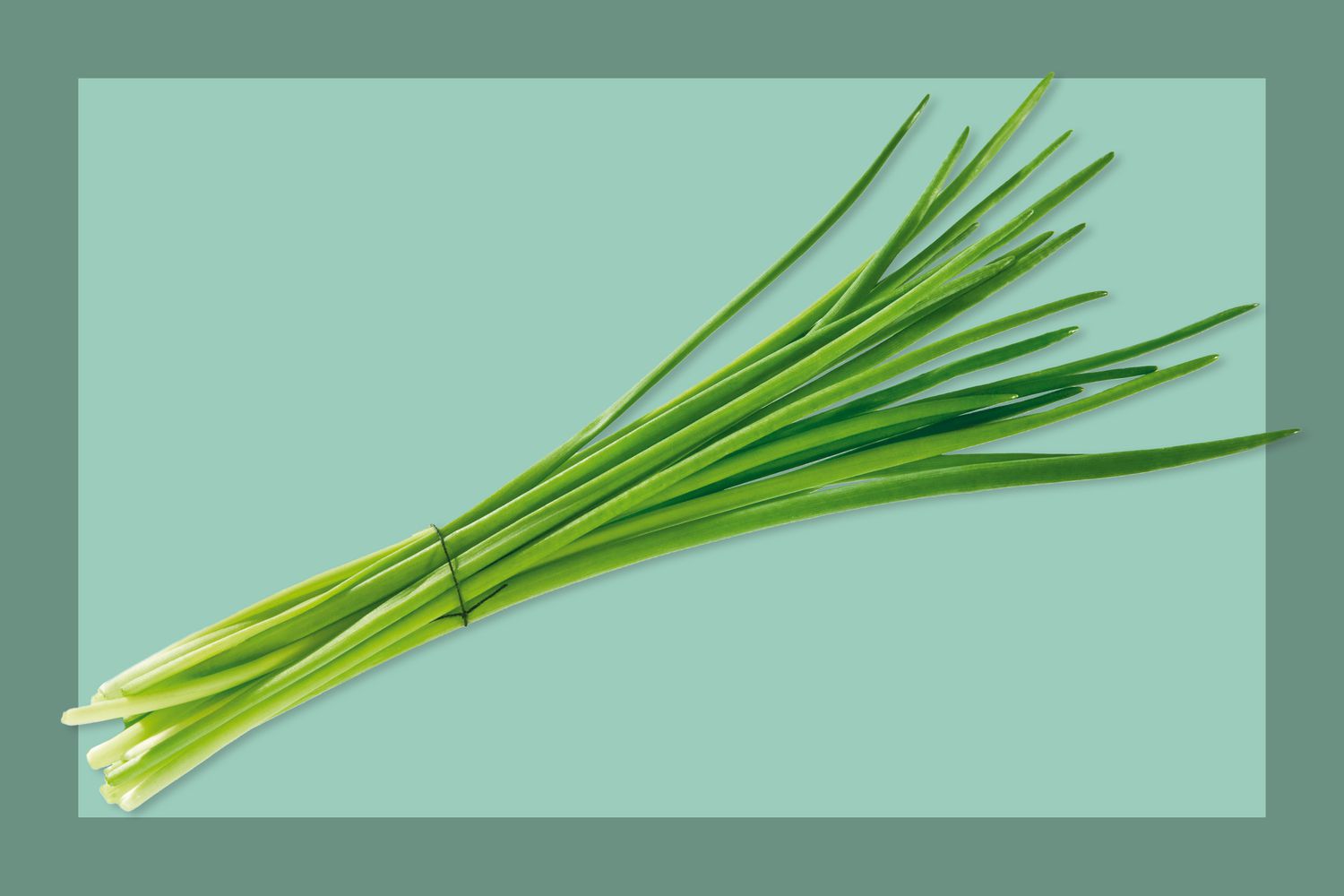
Chives vs. Green Onions: What’s the Difference?
The allium family, which includes vegetables like onions, garlic, and leeks, is a foundation of virtually every cuisine. Though less common than bulb onions, chives and green onions can pull double duty, combining onions’ pungency with herbs’ delicacy. Here’s how to use either to enhance your springtime cooking.
Key takeaways
- Green onions and chives both belong to the allium family and have an oniony, lightly herbal flavor.
- Chives are slightly milder than green onions.
- The green parts of green onions are generally interchangeable with chives.
- Green onions stand up to cooking whole, whereas chives are best when used as a raw garnish or just briefly cooked.
What’s the difference between green onions and chives?
Green onions are also called scallions or bunching onions. They can refer to immature shoots of the common onion (Allium cepa), or Allium fistulosum, a flowering plant that does not grow bulbs. Chives come from another flowering plant, Allium schoenoprasum (the blossoms are edible; look for chive blossoms at the farmers market). The grass-like leaves are bunched and sold as an herb.
Food & Wine / Getty Images
Tucker Taylor, master culinary gardener for Kendall-Jackson Wine Estate & Gardens in Santa Rosa, California, says that green onions and chives have distinct differences. “Chives are dark green with thin, hollow, grass-like leaves that grow in dense clumps. They’re uniform in size and lack a prominent bulb,” he says. “Scallions are light green with more rigid tubular leaves that transition into a white, slightly swollen base.”
Tucker notes that when harvesting, chives are snipped just above the soil line so they quickly regrow, while scallions are usually pulled whole from the ground since they are most often sold with the base attached.
“Chive leaves and flowers are most commonly consumed because of their mild flavor and delicate texture, while the scapes [the central stem with the flower] are generally not because of the fibrous texture,” he says. “Scallions, however, have two distinct parts that can be cooked as a whole or divided for different preparations.”
How to buy and store green onions and chives
Look for bright green leaves that aren’t yellowing, browning, or limp. Scallion stalks should be neither slimy nor dried out. At home, both should be wrapped in a dry paper towel, sealed in a ziplock bag, and refrigerated, preferably in the crisper drawer. Wash and dry them just before using. Any absorbed water can accelerate spoilage.
How to use green onions vs. chives
Generally speaking, chives and the green parts of scallions/green onions are interchangeable. Use chives in place of scallions in scallion pancakes, biscuits, and Green Goddess dip or dressing. Try replacing chives with scallions in mashed potatoes, quiche, and salsa verde. They both make excellent additions to everything from stir-fries to dips to potato dishes.
Food & Wine / Getty Images
However, green onions stand up better to cooking than chives. Roast green onions whole under a chicken, or sauté the white or light green parts in oil to help build flavor for soups, stews, and more.
“One of my favorite ways to use very fresh chives or scallions is in a sauce for roasted potatoes,” says Tucker. “I chop them and add the zest and juice of a lemon along with salt. I let this marinate while the potatoes roast, then before serving whisk in some sour cream and fresh-cracked pepper. While chives are a bit milder and scallions are a bit stronger, both add fresh onion flavor.”
When slicing either green onions or chives, use your sharpest knife, as they bruise easily.
What is green garlic?
Green garlic is simply the immature garlic (Allium sativum) plant before it forms bulbs. It can often be found in farmers markets in early spring. It resembles a scallion and can be used in much the same way.
What are garlic chives?
Garlic chives, aka Chinese chives, are yet another species (Allium tuberosum). They grow like chives, but they have much longer and wider leaves, and are flat rather than hollow. They are sturdier and more pungent than chives, so while they can be used raw, they also lend themselves to cooked dishes like dumplings and stir-fries.










